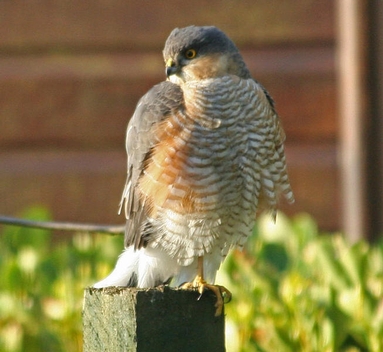Songbirds and Their Predators

Sparrowhawks killing birds in gardens, Great Spotted Woodpeckers taking chicks from nest boxes or crows raiding nests, while all part of life’s rich tapestry, have lead to debate about the impact of predators on songbirds.
Recently, research on this by Newson S.E, et al was published in the Journal of Applied Ecology 47: 244-252. This involved collaboration between the British Trust for Ornithology, the University of St Andrews, the Game and Wildfowl Conservation Trust and funding from Songbird Survival. Forty years worth of data from the Breeding Bird Survey and Common Birds Census was statistically examined. The researchers were looking for a relationship between the number of the predators and the number of prey. Three juvenile and adult bird predators including Sparrowhawk and five nest predators including Great Spotted Woodpecker along with twenty nine potential prey species were all considered. This is arguably the most sophisticated, long–term and large scale analysis of its kind.
Their main conclusion: “There was little evidence that increases in predators were associated with large scale depression of prey abundance or population decline. Unexpectedly predator numbers have largely increased as the amount of prey has increased. Although this largely exonerates these predators from being the drivers of declines in the numbers of most songbird species at a national level, it does not preclude some predators from having local impacts upon the abundance or breeding success of some prey species. National population declines appear to be due to factors other than predation. “
The debate will no doubt go on, nationally and here on Arran.